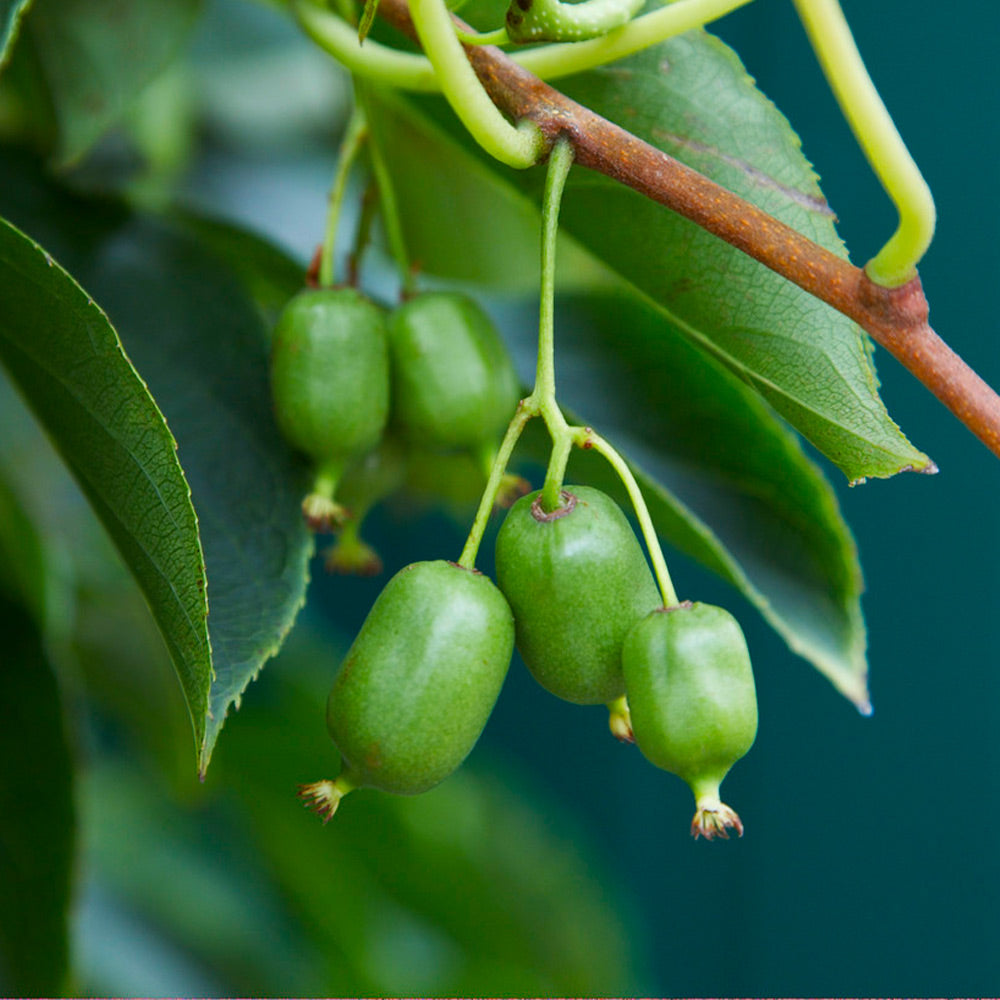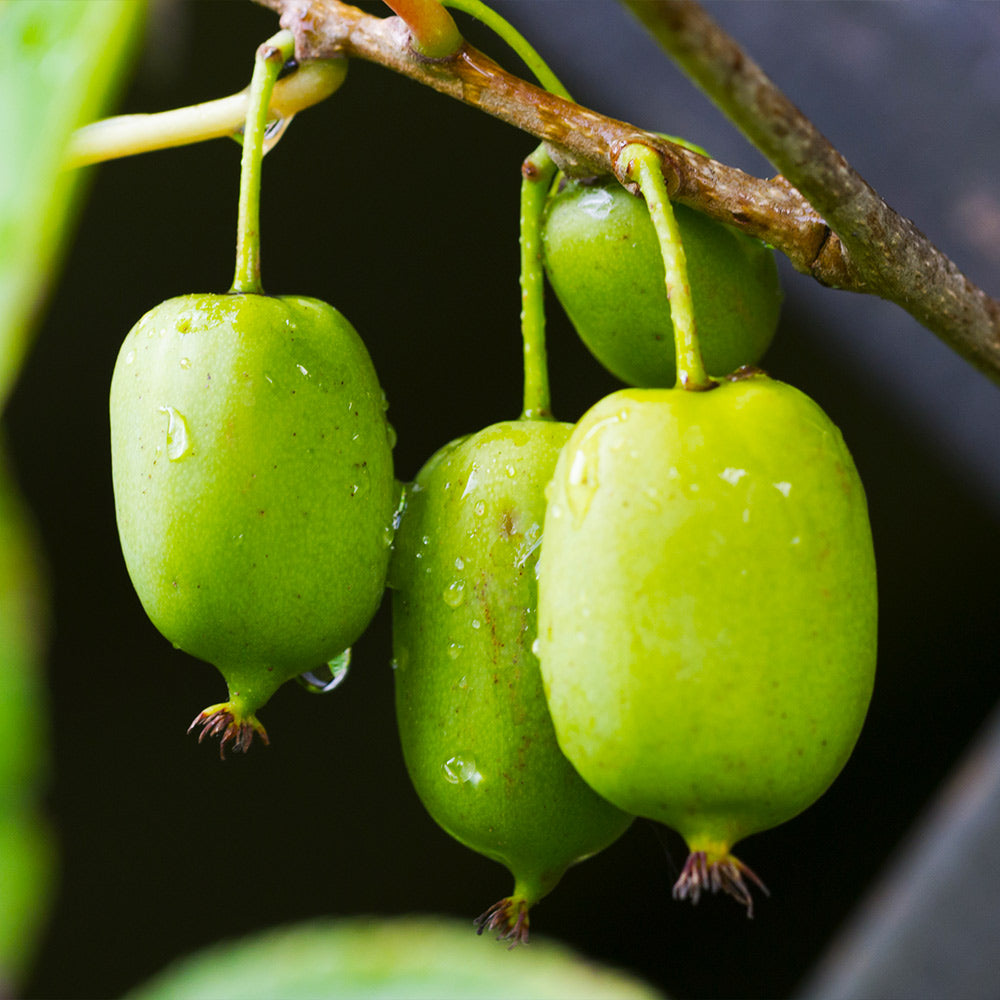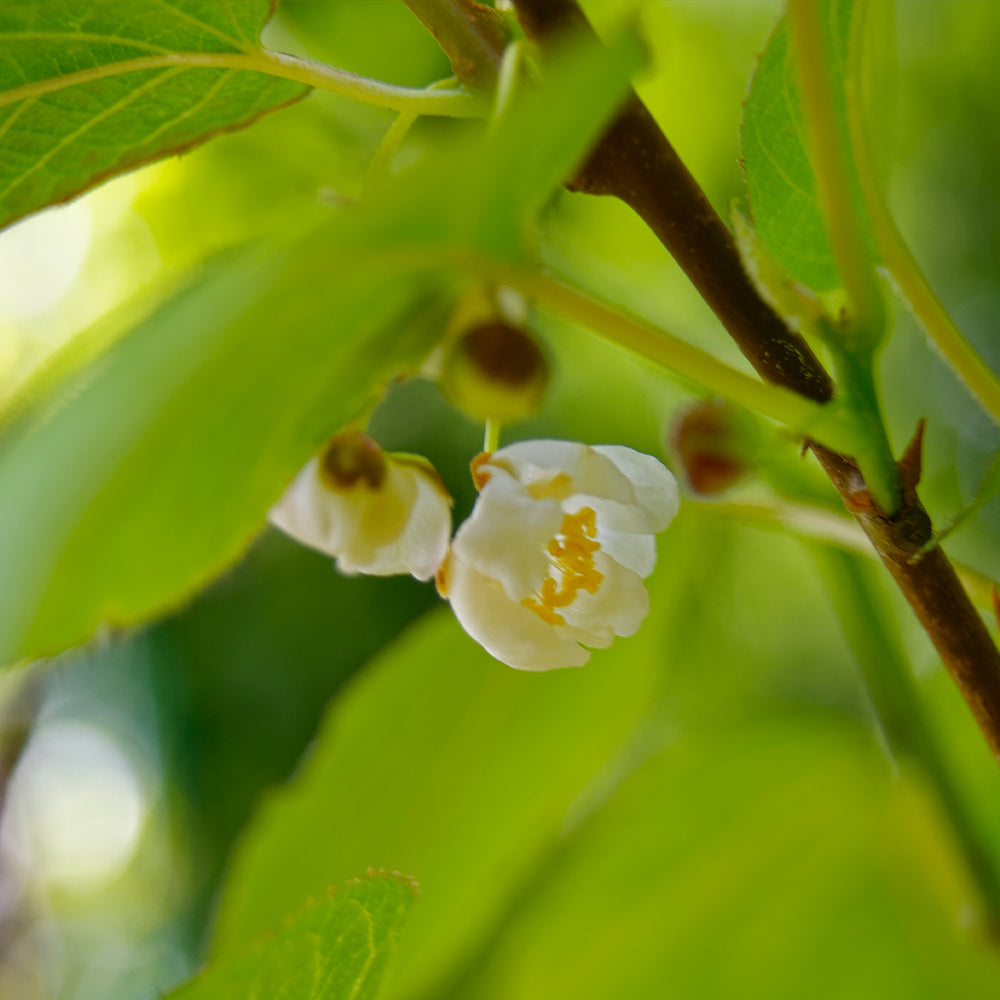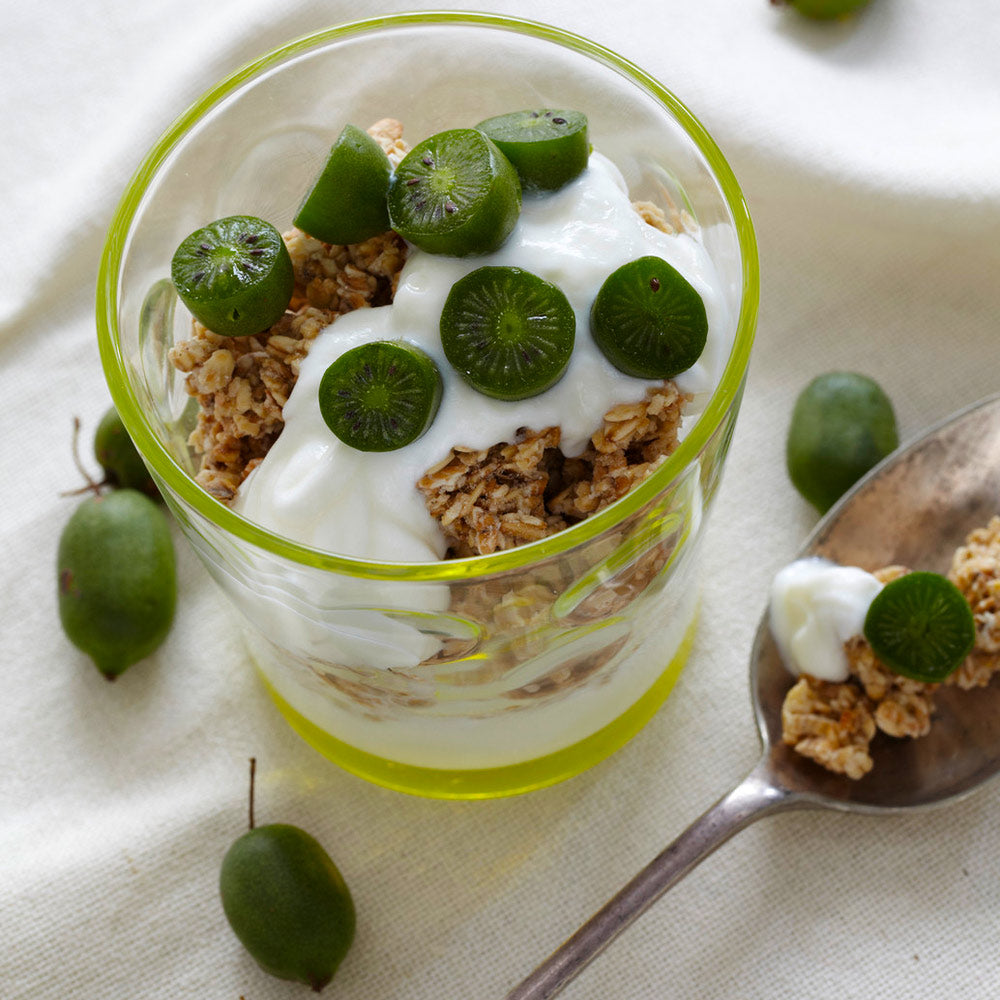Resilient Kiwi Plant is USDA Organic & Ideal for Backyard Gardening
Elevate your backyard gardening experience with our USDA Organic Prolific Kiwi! This fast-growing vine is perfect for cultivating in your outdoor oasis - whether you have a spacious garden or a cozy backyard. With its vigorous growth habit, this plant is ideal for trellises or fences, adding both beauty and functionality to your landscape!
Not only does the Prolific Kiwi boast impressive growth, but it's also cold-hardy and self-pollinating, making it a low-maintenance choice for home gardeners. In fact, this self-sufficient plant will independently yield delicious, grape-sized kiwis, right in your own backyard. Plus, this fruit is covered in a smooth skin - so it's perfect for snacking!
The best part? You can rest assured knowing that our Prolific Kiwi is certified USDA organic and grown with care and integrity. Plus, it's resistant to many pests and diseases - so you can trust that you're investing in a plant that will thrive with minimal fuss!
Bring the joy of homegrown fruit to your doorstep with our resilient and fruitful Prolific Kiwi - USDA Organic.
Planting & Care
1. Planting Instructions: Ensure your Kiwi is planted in well-drained soil, avoiding waterlogging. The Prolific thrives with partial shade during peak sunlight hours. Please note, this plant will grow vigorously and may need support to maintain its structure. A sturdy trellis or fence should offer ample stability.
2. Watering: Keep the soil moist for the first year to establish a healthy root system.
3. Fertilization: Fertilize in early spring with a balanced fertilizer to support healthy growth and fruit production..
4. Pruning: Pruning can aid in guiding the plant to grow along its support structure. Keep in mind that blooms and fruit develop on the previous year's growth, so avoid pruning all of it off.
Female plants: You can remove any shoots that are less fruit producing. Since Kiwis are typically grown on a trellis, once the vine reaches the very top of the trellis prune it back some to help train the vine.
Leave room for two buds near the top of the plant to grow. You can tie them loosely with planter’s tape to help support them, but allow them the room to grow. As the plant ages, continue to prune lateral shoots and allow the trunk to grow.
Male plants: Prune the flowering shoots down after the plant blooms. This can be done anywhere between 40-60 cm in length depending on the size of the plant. Ensure when you do this that mostly green growth is remaining on the shoots.
Pests: The wonderful thing about growing kiwi plants is they are virtually free of pest and fungal issues. Your plant may begin giving off a scent similar to “Cat Nip” as a result, cats find this plant attractive and will rub against the shoots. This can be problematic for young shoots and could cause damage. This is also makes the plant attractive to deer and gophers eating the leaves of the plant and in some cases the fruit. You can place protective fencing or netting around the plants as a protective measure.
If you have several plants growing in the same area this will also make them a target of scale and garden snails. They like to feed on the foliage. You can use an insecticidal soap or Neem Oil to treat any insect issues.







Comment